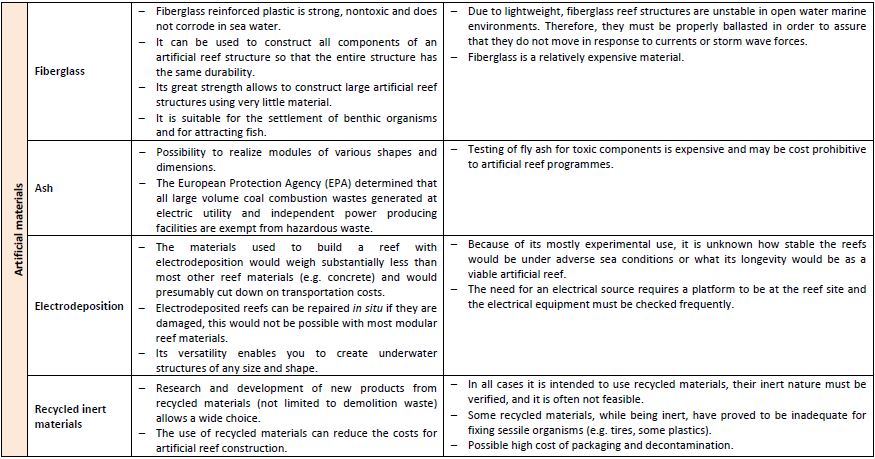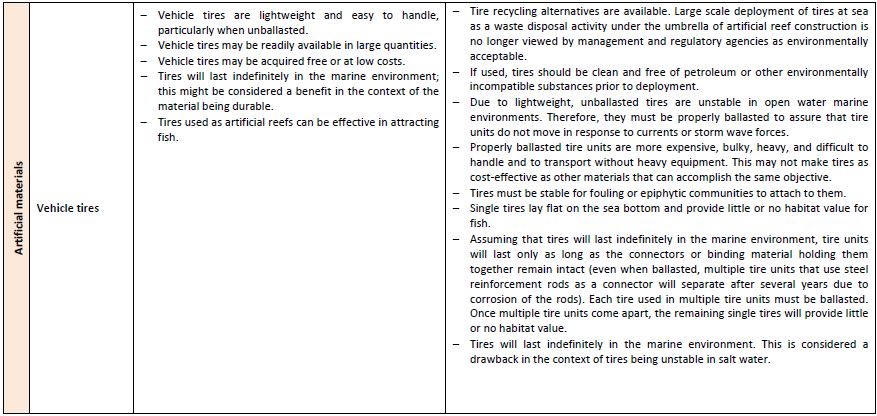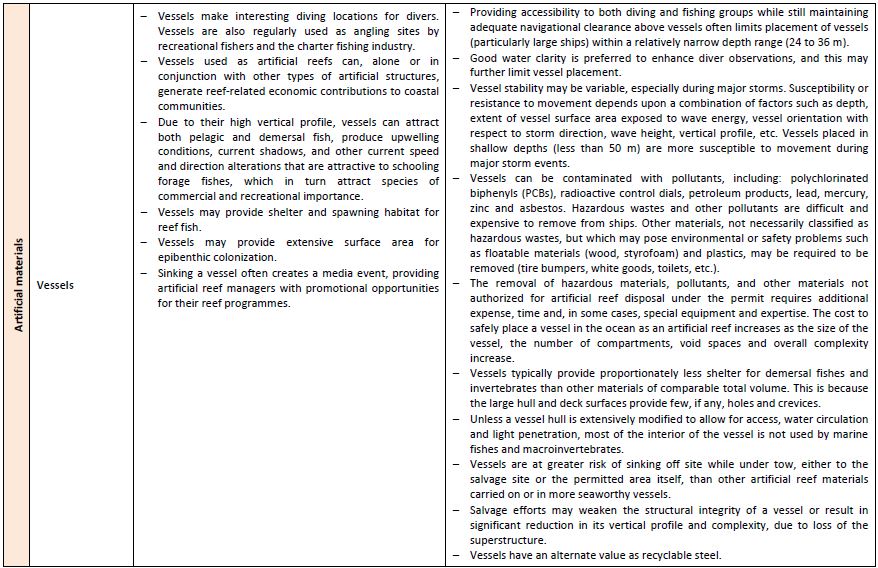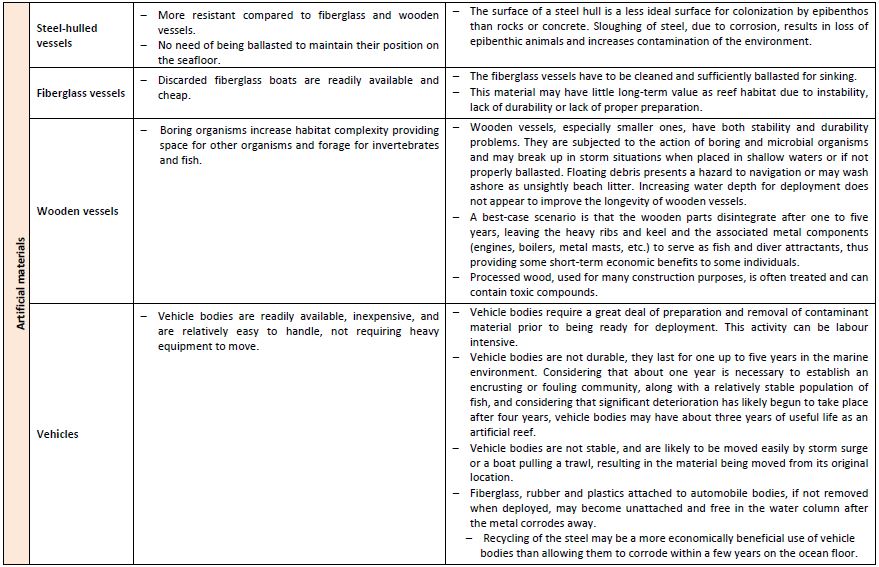4.4 Artificial reef dimensions
Artificial reef dimensions typically include measures to determine the surface area, total volume of material and bottom coverage (i.e. footprint). The reef bulk volume is the overall volume of the reef, which includes the structural volume and the interior volume.
The structural volume is the volume of the material, while the interior volume is the space enclosed within the external envelop of the reef structures and the free space between them (Grove et al., 1991). It stands to reason that reef footprint and volume (internal and structural) will all be bound to some degree to cost.
Also in this case, the optimal dimensions of an artificial reef strictly depend on its purposes. For example, the extension of protection and restoration artificial reefs is strictly linked to the area to be protected or restored. The former should be so extended to completely prevent the passage of fishing boats in the area to be safeguarded, while the latter should have a recovery potential proportional to the total surface of the habitat to be restored.
With regard to artificial reefs for stock and fishery enhancement, according to the Japanese experience, a reef set should have a minimum bulk volume of 400 m3 while the optimal artificial reef size would be 3000 m3/km2 of bulk volume (Sato, 1985). Generally, small artificial reefs may not be able to sustain permanent populations of some species due to insufficient food availability. However, given an equal amount of immersed material, a higher density of fish is usually reported at smaller artificial reefs with respect to larger reefs because the former have higher perimeter and can attract fish from larger areas (Bohnsack et al., 1991).
Table 1: List of materials for artificial reef construction: features, advantages disadvantages (modified from Atlantic and Gulf States Marine Fisheries Commissions, 2004)




